Regrow enoki mushrooms indoors? Absolutely! Have you ever tossed those little enoki mushroom roots after enjoying a delicious hot pot or stir-fry, feeling a twinge of guilt? Well, no more! I’m here to tell you that you can easily give those discarded stems a second life and cultivate your own supply of these delicate, flavorful fungi right in your kitchen.
For centuries, enoki mushrooms, also known as golden needle mushrooms, have been a staple in East Asian cuisine, prized for their unique texture and subtle, earthy flavor. Traditionally grown in the dark on hardwood logs, these slender mushrooms have a fascinating history. But you don’t need a forest or specialized equipment to enjoy them fresh.
In today’s world, where sustainability and self-sufficiency are becoming increasingly important, learning to regrow enoki mushrooms indoors is not just a fun project; it’s a practical way to reduce food waste, save money, and connect with the natural world. Imagine the satisfaction of harvesting your own homegrown mushrooms for a gourmet meal! Plus, it’s a fantastic educational activity for kids, teaching them about the life cycle of fungi and the importance of resourcefulness. So, let’s dive into this simple, step-by-step guide and unlock the secrets to cultivating your own enoki mushroom bounty. Get ready to transform your kitchen into a mini mushroom farm!
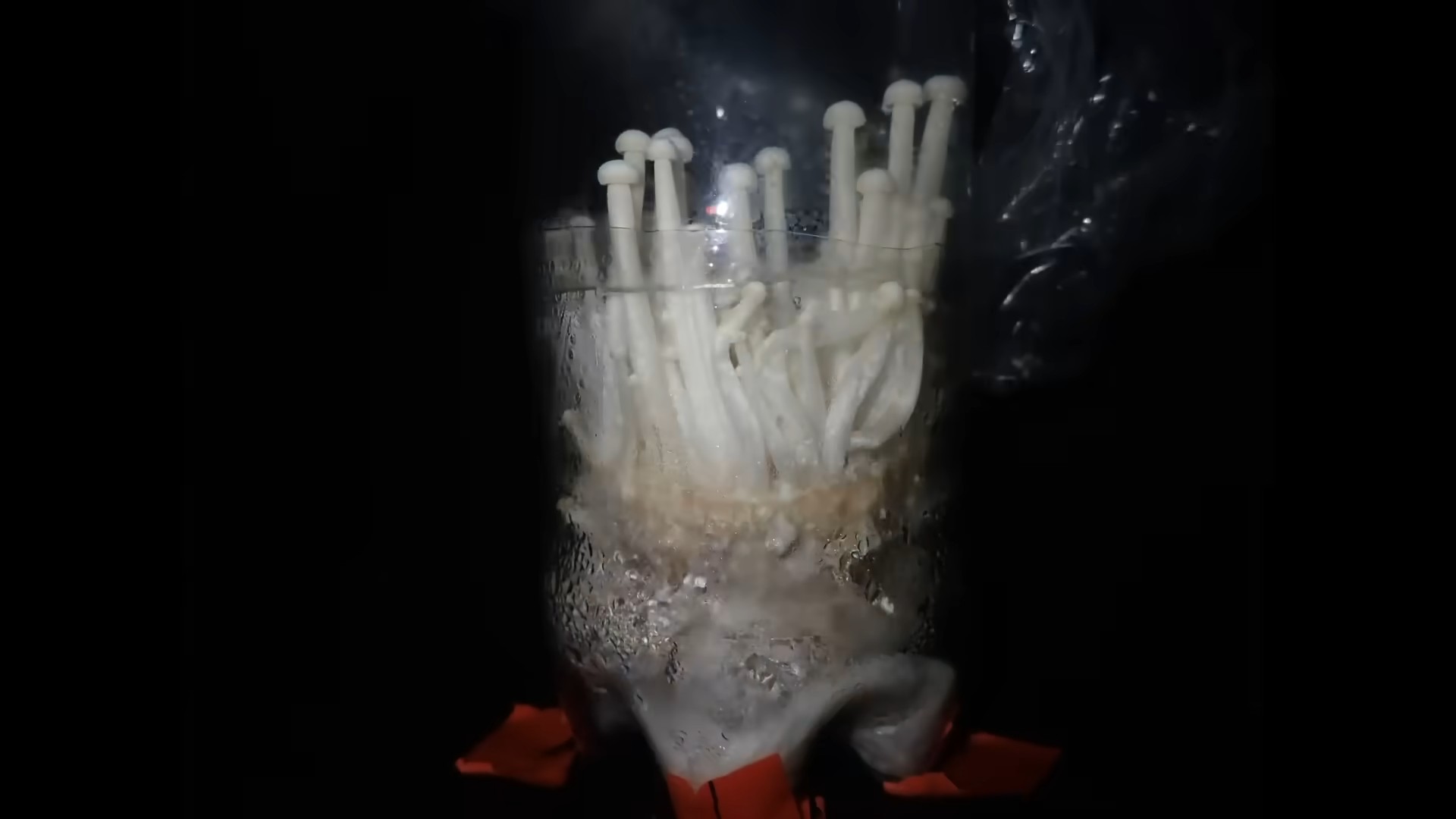
Regrowing Enoki Mushrooms Indoors: A Fun and Frugal Project!
Hey there, fellow mushroom enthusiasts! Ever bought a package of those delicate, long-stemmed enoki mushrooms and felt bad tossing the base after using the tops? Well, I’m here to tell you that you don’t have to! You can actually regrow enoki mushrooms right in your own home. It’s a surprisingly simple and rewarding process, and I’m going to walk you through every step. Get ready to impress your friends with your mushroom-growing prowess!
What You’ll Need
Before we dive in, let’s gather our supplies. This is a pretty low-cost project, which is always a win in my book!
* Enoki Mushroom Stems: The base of a store-bought package of enoki mushrooms. Make sure they look healthy and aren’t slimy or discolored.
* Clean Container: A plastic container with a lid, a glass jar, or even a resealable plastic bag will work. Just make sure it’s clean to prevent contamination.
* Cardboard: Plain, unprinted cardboard is best. Think cereal boxes or shipping boxes. Avoid glossy or heavily printed cardboard.
* Water: Clean, dechlorinated water. Tap water is fine if you let it sit out for 24 hours to allow the chlorine to evaporate. Bottled water also works great.
* Hydrogen Peroxide (Optional): A small amount of 3% hydrogen peroxide can help prevent mold growth, but it’s not essential.
* Spray Bottle: For misting the mushrooms.
* Dark, Cool Place: A basement, closet, or even under the sink will do. Enoki mushrooms prefer cooler temperatures.
Preparing the Cardboard Substrate
The cardboard acts as the food source for the enoki mushrooms, so preparing it properly is crucial.
1. Tear the Cardboard: Tear the cardboard into small pieces, about 1-2 inches square. The smaller the pieces, the easier they will be to saturate with water.
2. Soak the Cardboard: Place the cardboard pieces in a bowl or container and cover them with dechlorinated water. Make sure all the cardboard is submerged. Let it soak for at least 24 hours, or even longer. The cardboard needs to be completely saturated.
3. Drain the Cardboard: After soaking, drain the cardboard thoroughly. You want it to be damp, not dripping wet. Gently squeeze out any excess water.
4. (Optional) Hydrogen Peroxide Treatment: If you’re concerned about mold, you can add a small amount of 3% hydrogen peroxide to the soaking water (about 1 tablespoon per quart of water). This will help kill any unwanted microorganisms.
Preparing the Enoki Mushroom Stems
Now, let’s get those enoki stems ready for their second life!
1. Clean the Stems: Gently rinse the enoki mushroom stems under cool water to remove any dirt or debris.
2. Trim the Ends: Trim the very bottom of the stems, removing any brown or damaged parts. This will help prevent contamination.
3. Separate the Stems (Optional): You can gently separate the stems into smaller clumps. This will help them spread out and colonize the cardboard more effectively.
Assembling the Growing Container
This is where the magic happens! We’re going to create the perfect environment for our enoki mushrooms to thrive.
1. Layer the Cardboard: Place a layer of the damp cardboard at the bottom of your clean container.
2. Add the Enoki Stems: Arrange the enoki mushroom stems on top of the cardboard layer. Spread them out evenly.
3. Cover with Cardboard: Cover the enoki stems with another layer of damp cardboard. You want to completely bury the stems.
4. Moisten the Top Layer: Lightly mist the top layer of cardboard with dechlorinated water to ensure it’s damp.
5. Close the Container: Place the lid on the container or seal the plastic bag. You want to create a humid environment, but not airtight. If using a container with a tight-fitting lid, you can poke a few small holes for ventilation.
Incubation: The Waiting Game
This is the most patient part of the process. We need to give the enoki mushrooms time to colonize the cardboard.
1. Find a Dark, Cool Place: Place the container in a dark, cool place. The ideal temperature is between 50-65°F (10-18°C).
2. Monitor the Moisture: Check the container every few days to make sure the cardboard is still damp. If it starts to dry out, lightly mist it with dechlorinated water.
3. Be Patient: It will take several weeks for the enoki mushrooms to colonize the cardboard. You should start to see white, fuzzy mycelium (the mushroom’s root system) growing on the cardboard and stems. This is a good sign!
4. Check for Contamination: Keep an eye out for any signs of mold or contamination. If you see any green, black, or other unusual colors, remove the contaminated area immediately. A little bit of white mold is usually harmless, but anything else should be removed.
Fruiting: Time to Grow!
Once the cardboard is fully colonized with mycelium, it’s time to trigger fruiting, which is when the mushrooms start to grow.
1. Introduce Light: Move the container to a location with indirect light. Enoki mushrooms need some light to fruit properly, but direct sunlight can dry them out.
2. Lower the Temperature (If Possible): Lowering the temperature slightly can also help trigger fruiting. Aim for a temperature between 40-50°F (4-10°C). This can be tricky indoors, but you can try placing the container in a cooler part of your house or even in the refrigerator for a few hours each day.
3. Increase Humidity: Enoki mushrooms need high humidity to fruit. You can increase the humidity by misting the container regularly with dechlorinated water. You can also place the container inside a larger plastic bag or container with a damp paper towel.
4. Ventilation: Make sure the container has adequate ventilation to prevent mold growth. Open the lid or bag for a few minutes each day to allow fresh air to circulate.
5. Wait and Watch: After a week or two, you should start to see tiny mushroom pins forming. These will eventually grow into full-sized enoki mushrooms.
Harvesting Your Enoki Mushrooms
The moment you’ve been waiting for! Harvesting your own homegrown enoki mushrooms is incredibly satisfying.
1. Harvest When Mature: Harvest the enoki mushrooms when they are about 4-6 inches long and the caps are still small and tight.
2. Cut the Stems: Use a clean knife or scissors to cut the stems at the base, just above the cardboard.
3. Enjoy Your Harvest: Your freshly grown enoki mushrooms are now ready to be enjoyed! They’re delicious in soups, stir-fries, salads, and more.
Second Flush (Optional)
You can often get a second flush of enoki mushrooms from the same cardboard substrate.
1. Soak the Substrate: After harvesting the first flush, soak the cardboard substrate in dechlorinated water for 24 hours.
2. Drain and Repeat: Drain the substrate and repeat the fruiting process. You may get a smaller harvest the second time around, but it’s still worth a try!
Troubleshooting
Even with the best intentions, things don’t always go as planned. Here are a few common problems you might encounter and how to fix them.
* Mold Growth: If you see mold growing in your container, remove the contaminated area immediately. You can also try adding a small amount of hydrogen peroxide to the water you use for misting.
* Slow Growth: If your enoki mushrooms are growing slowly, make sure they have enough moisture, light, and ventilation. You can also try lowering the temperature slightly.
* No Fruiting: If your enoki mushrooms aren’t fruiting, try lowering the temperature and increasing the humidity. You can also try moving the container to a location with more indirect light.
* Drying Out: If the cardboard is drying out too quickly, mist it more frequently or place the container inside a larger plastic bag or container with a damp paper towel.
Tips for Success
Here are a few extra tips to help you succeed in your enoki mushroom growing adventure:
* Start with Healthy Stems: The healthier the enoki mushroom stems you start with, the better your chances of success.
* Maintain Cleanliness: Cleanliness is key to preventing contamination. Make sure all your containers and tools are clean before you start.
* Be Patient: Growing enoki mushrooms takes time and patience. Don’t get discouraged if you don
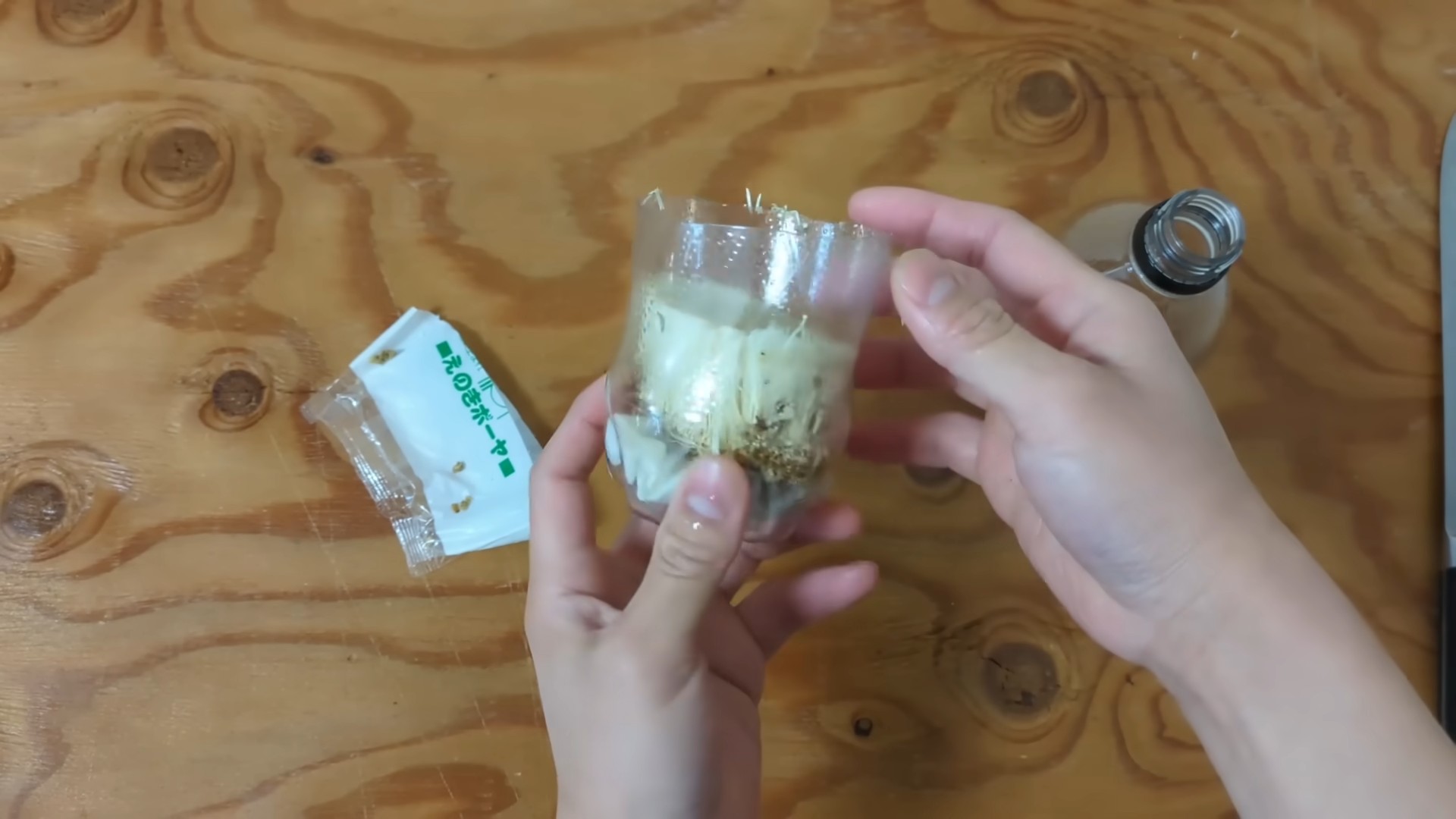
Conclusion
So, there you have it! Regrowing enoki mushrooms indoors is not just a fun experiment; it’s a rewarding way to enjoy fresh, delicious mushrooms right from your own home. Forget those expensive grocery store prices and the uncertainty of freshness. With a little patience and minimal effort, you can cultivate your own supply of these delicate, flavorful fungi.
This DIY trick is a must-try for several reasons. First, it’s incredibly sustainable. You’re reducing food waste by utilizing the base of store-bought enoki mushrooms that would otherwise end up in the trash. Second, it’s a fantastic learning experience, especially for those interested in mycology or gardening. Witnessing the entire life cycle of a mushroom, from a tiny stem to a full-fledged cluster, is truly fascinating. Third, and perhaps most importantly, it provides you with a constant supply of fresh, organic enoki mushrooms, free from pesticides and other harmful chemicals.
But the fun doesn’t stop there! Feel free to experiment with different substrates. While the instructions focus on using sawdust or wood chips, you can also try supplementing with coffee grounds or even cardboard. Just be sure to sterilize everything properly to prevent contamination. Another variation is to play around with the environmental conditions. Enoki mushrooms thrive in cool, humid environments, but you can try adjusting the temperature and humidity levels to see how it affects their growth and flavor. You might even discover a unique microclimate that produces particularly delicious mushrooms!
Why is this method so appealing? Because it empowers you to take control of your food source and connect with nature in a tangible way. It’s a small step towards a more sustainable lifestyle and a delicious one at that.
Don’t be intimidated if your first attempt isn’t perfect. Growing mushrooms can be a bit of a learning curve, but with each try, you’ll gain valuable experience and refine your technique. The key is to be patient, observant, and persistent.
We wholeheartedly encourage you to try this DIY trick and experience the joy of regrowing enoki mushrooms indoors. It’s a simple, satisfying, and sustainable way to add a touch of gourmet to your home cooking. And once you’ve harvested your first batch, don’t forget to share your experience with us! We’d love to hear about your successes, your challenges, and any variations you’ve tried. Share your photos and stories in the comments below – let’s build a community of indoor mushroom growers! Let us know if you found this guide on how to regrow enoki mushrooms indoors helpful.
Frequently Asked Questions (FAQ)
What exactly are enoki mushrooms, and why should I grow them?
Enoki mushrooms (Flammulina velutipes) are long, thin, white mushrooms with small caps, often sold in clusters. They have a mild, slightly fruity flavor and a crisp texture, making them a popular addition to soups, salads, stir-fries, and other dishes. Growing them yourself ensures freshness, reduces food waste, and provides a fun and educational experience. Plus, store-bought enoki can be expensive, so regrowing them is a cost-effective alternative.
How long does it take to regrow enoki mushrooms?
The time it takes to regrow enoki mushrooms can vary depending on environmental conditions and the health of the original mushroom base. Generally, you can expect to see new growth within 2-4 weeks. It may take another 2-4 weeks for the mushrooms to fully mature and be ready for harvest. Patience is key!
What kind of substrate should I use?
The best substrate for regrowing enoki mushrooms is a mixture of hardwood sawdust or wood chips. You can also supplement with coffee grounds, which provide additional nutrients. Ensure that the substrate is properly sterilized to prevent contamination from mold or other fungi. Sterilization can be achieved by boiling the substrate for at least an hour or pressure cooking it.
How do I sterilize the substrate?
Sterilizing the substrate is crucial to prevent contamination. The most effective method is to use a pressure cooker. Place the substrate in a heat-safe container with a lid, add a small amount of water, and pressure cook for 90 minutes at 15 PSI. If you don’t have a pressure cooker, you can boil the substrate in a large pot for at least an hour. Make sure the substrate is fully submerged in water. After sterilization, allow the substrate to cool completely before adding the mushroom base.
What are the ideal environmental conditions for regrowing enoki mushrooms?
Enoki mushrooms thrive in cool, humid environments. The ideal temperature range is between 50-65°F (10-18°C). Maintain high humidity levels (80-90%) by misting the mushrooms regularly or placing them in a humidity tent or a container with a lid. Avoid direct sunlight, as it can dry out the mushrooms. A dark or dimly lit location is best.
How often should I mist the mushrooms?
Mist the mushrooms at least once or twice a day, or more frequently if the humidity is low. The goal is to keep the substrate and the mushrooms moist but not waterlogged. Use a spray bottle to gently mist the mushrooms with distilled or filtered water.
How do I know when the mushrooms are ready to harvest?
Enoki mushrooms are ready to harvest when they have reached a desired length (typically 4-6 inches) and the caps are still small and tightly closed. If the caps start to open and flatten, it’s a sign that the mushrooms are overripe.
How do I harvest the mushrooms?
To harvest the mushrooms, use a clean, sharp knife or scissors to cut the cluster at the base, just above the substrate. Avoid pulling the mushrooms out, as this can damage the remaining mycelium and prevent further growth.
Can I regrow enoki mushrooms more than once from the same base?
Yes, you can typically regrow enoki mushrooms several times from the same base. After harvesting, allow the substrate to rest for a week or two, then resume misting and maintaining the ideal environmental conditions. You may need to add fresh sterilized substrate to replenish nutrients.
What if my enoki mushrooms start to mold?
Mold is a common problem when growing mushrooms. If you notice mold, remove the affected area immediately with a clean knife or spoon. Ensure that the substrate is not too wet and that there is adequate ventilation. If the mold persists, it may be necessary to discard the entire batch and start over with fresh, sterilized substrate.
Can I use tap water for misting?
It’s best to use distilled or filtered water for misting, as tap water can contain chlorine and other chemicals that may inhibit mushroom growth.
What are some common problems when regrowing enoki mushrooms, and how can I fix them?
Some common problems include slow growth, mold contamination, and dry mushrooms. Slow growth can be caused by low temperatures, insufficient humidity, or lack of nutrients. Mold contamination can be prevented by sterilizing the substrate properly and maintaining good hygiene. Dry mushrooms can be remedied by increasing humidity and misting more frequently.
Are there any variations I can try?
Absolutely! You can experiment with different substrates, such as adding coffee grounds or cardboard. You can also try adjusting the temperature and humidity levels to see how it affects the growth and flavor of the mushrooms. Some growers even add small amounts of sugar or molasses to the substrate to provide additional energy for the mushrooms.
Is regrowing enoki mushrooms indoors safe?
Yes, regrowing enoki mushrooms indoors is generally safe, as long as you follow proper hygiene practices and avoid consuming any mushrooms that show signs of mold or contamination. Always wash your hands thoroughly before handling the mushrooms and the substrate.

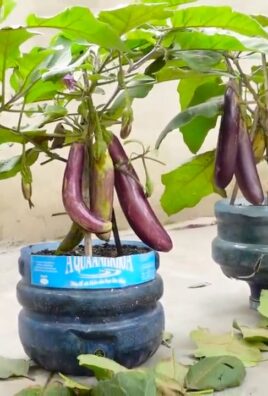
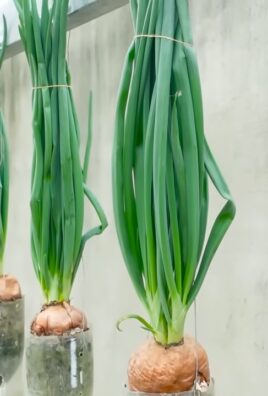
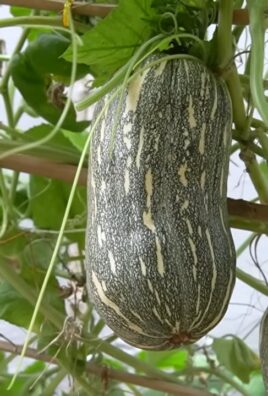
Leave a Comment